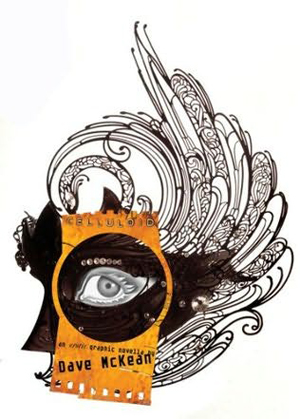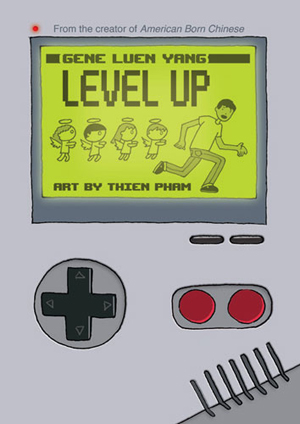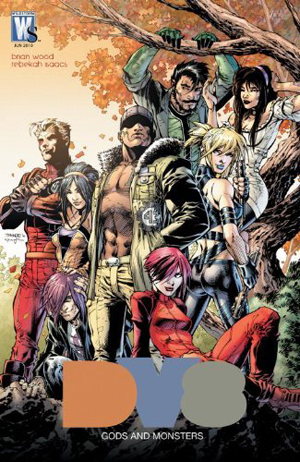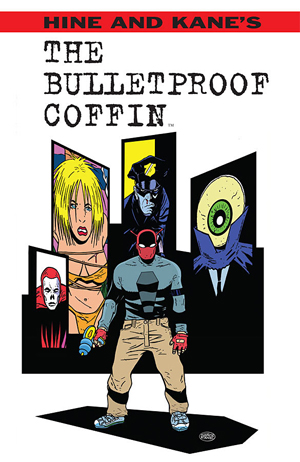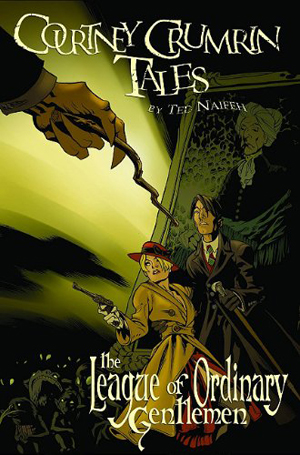
Each week, Paste reviews the most intriguing comic books, graphic novels, graphic memoirs and other illustrated books.
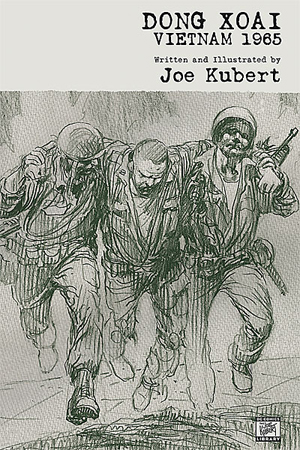
Dong Xoai, Vietnam 1965 by Joe Kubert
DC Comics 2010 (softcover in 2011)
Rating: 8.0
Dong Xoai, Vietnam 1965, a 2010 graphic novel recently reissued in softcover, is not a traditional comic book. Instead of a standard, heavily sequential series of panels, Dong Xoai consists of a series of pencil sketches with caption boxes containing dialogue and other information. There’s a bit of narrative flow to the images, but often it feels like a collection of pin-ups with small scraps of text appended to help the reader keep pace. Kubert’s prose is terse and direct, like the soldiers he writes about, and his scratchy lines are rougher than usual. These drawings feel more personal and immediate than his work on Sgt. Rock and other classic war comics, which fits the reality of the story. Yes, Dong Xoai is fictionalized, but the battle was real, and Kubert drew on facts and the memories and experiences of American servicemen for his story and the extensive back-matter. It’s impossible to read Dong Xoai and not feel a tremendous sense of loss, both over the fate of Kubert’s characters, but also over the many years of horrible war that followed Dong Xoai. The art is paramount, though, and after decades in the industry Kubert remains one of the medium’s most distinctive stylists. (GM)
Celluloid by Dave McKean
Fantagraphics Books, Inc. 2011
Rating: 8.1
In the landmark obscenity trial of Jacobellis v. Ohio, Justice Potter Stewart famously proclaimed that he could not define pornography, but knew it when he saw it. Today, Stewart might have a bit of trouble discerning the content of Dave Mckean’s gorgeous picture book, Celluloid. The visionary art director behind The Sandman covers creates a coital masterwork that illicits beauty and excitement in equal measure. The call for classy, female-friendly erotica is a burgeoning topic that’s involved everyone from Alan Moore to indie film god Lars von Trier; suffice to say that its appropriate exploration requires more space than this review allows. The fact of the matter is that McKean is an absurdly talented artist whose eclectic multimedia tastes would render any subject, including14-breasted grape nymphs, surreal and otherworldly. In the case of Celluloid, this subject matter happens to involve a nameless lass who wanders into a mystical portal where she indulges in hanky panky with all manner of mural-made creature. Though erotic media notoriously shafts storytelling, I actually found myself wishing for some narrative structure to complement this hazy fever dream. That said, Celluloid is a treasure of technical finesse and sensual mystique that transcends its potential controversy. (SE)
Level Up! by Gene Luen Yang and Thien Pham
First Second 2011
Rating: 7.9
It would be easy to dismiss Gene Luen Yang’s new book as slight or obvious, given its focus on video games (the former) and filial piety (the latter), but that would be unfair and inaccurate. Yang, with the help of Thien Pham’s simple, subtle art, which mixes cuteness with vague menace, may be on familiar ground, but his story never feels trite. It’s as though he’s going out of his way not to walk in the footsteps of others in this tale of a young man torn between his parents’ dream of med school and his own addiction to video games. Even if you sneer at the idea of angels, the presence of four creepy little winged beings in our protagonist’s life could not be less Thomas Kinkade. Instead, they’re more tiger mother. The pace is swift, meaning you’ll finish the book before you realize it, but the plot is neatly crafted, with a particularly clever final twist, and the result is a small, beautifully made object. (HB)
DV8: Gods and Monsters by Brian Wood and Rebekah Isaacs
DC Comics 2011
Rating: 9.2
Now this is how you do a relaunch. When Brian Wood announced that he was working on a new project that he had pitched throughout his career, the sociopathic teen clichés of DV8 were the last thing on anyone’s mind. Originally introduced as a cross between the testosterone action of the early 90s and Harmony Korine’s troubling expose Kids, DV8 always felt more like a poorly written X-Men with eviscerations than a portrait of youth desensitization. Wood takes a different route and delivers a provocative character study – his team of empowered misfits would make for a exhilarating read even if they were imprisoned in a lecture hall watching a Ken Burns marathon. In actuality, the characters are marooned on a distant planet where they conquer a fractured group of primitive tribes that they soon train to war with one another. Though it sounds like a pulpy sci-fi plot, this device is the perfect mechanism for each personality to project its reckless ID. It provides a deep illustration of the insecurities and constructs these kids use to stay grounded in an unfathomably unstable world. As a stand-alone, this is one of the best mainstream “superhero” stories of the year. But the ending hints that Wood and artist Rebekah Isaacs might be back to visit the retired Wildstorm universe. Hopefully this trade gets the sales and attention to warrant more work from this crazy-good team. (SE)
The Tooth by Cullen Bunn, Shawn Lee, and Matt Kindt
Oni Press 2011
Rating: 7.1
There’s a grab-bag quality to The Tooth, from writers Cullen Bunn and Shawn Lee and artist/designer Matt Kindt, that makes it difficult to pin down. Designed to mimic a series of found issues of a comic about a mighty molar humanoid that battles anything that gets in its way, it has elements of early horror comics, a silver-age penchant for alliteration and allusive in-jokes from the narrator, and fake ads that are clearly 1970s-era tributes, but the characters also have cell phones, which makes the whole issue of timeline something better left alone. It all seems like it shouldn’t really work, beginning with the weird central concept, but as long as you don’t try too hard to figure out what its creators are up to (is it a parody like Afrodisiac? a pure homage? a mere marketing device?) it’s a pleasurable read. Kindt’s colored-pencil-and-wash style and his designy touches that make the book feel well-thumbed are part of the charm, and there’s an appealing goofiness to the story. Be warned: It’s unexpectedly gory (lots of arms being ripped off), but the sense of humor leavens the violence. (HB)
The Bulletproof Coffin by David Hine and Shaky Kane
Image Comics 2011
Rating: 7.8
So go ahead and reread the review a few centimeters above by the lovely Ms. Brown and you’ll have a beyond accurate idea of what The Bulletproof Coffin is all about. The only difference between our critiques is that I have a slightly higher appreciation for hyper-violent pulp homage, as quantified by a .7 rating hike. Riffing through these eight issues was an especially nostalgic experience, not unlike discovering a decaying batch of ancient EC comics in your Dad’s basement. Hine and Kane go for the meta-jugular here, creating a parallel comic industry universe where the pair created a line of exploitive, golden age adventurers who are gobbled up by “Big 2 Publishing” (buh-dum tish). Kane’s illustrations veer between the retro fun of Mike Allred and the cracked detail of Geof Darrow, perfectly capturing the grind house fun of dinosaur-riding bombshells and zombified Vietnam soldiers. The plot comes to a wry ending that fits with the narrative’s tonge’n’cheek nature, but these goofy characters would be more than welcomed back on my bookshelf if they ever want to break the fourth wall again. (SE)
Strange Adventures #1 by various writers and artists
Vertigo Comics 2011
Rating: 6.2
Why can’t the future ever be fun? These sci-fi tales come from creators both familiar (Peter Milligan, Jeff Lemire, Brian Azzarello and Eduardo Risso) and unfamiliar (Selwyn Hinds, Lauren Beukes, Talia Hershewe) to Vertigo readers, but most of them share a wary attitude towards science and technology. From the class war-torn dystopias of Hinds and Beukes to Lemire’s Moon-ish take on the isolation of Silver Age oddity Ultra the Multi-Alien, these adventures are less strange than sad. At least Hershewe finds hope among her virtual reality sex addicts. Not that every story needs to uplift, but it’s tiresome to read one overly serious and sad-faced story after another. Lemire, Milligan, and Kevin Colden escape that fate by focusing on the personal instead of the societal, while Ross Campbell generally foregoes sci-fi in favor of horror in his unsettling short “Refuse”. Azzarello and Risso’s Spaceman establishes a very slight foundation for their upcoming series of the same name. Risso’s creepy, shadowy art is excellent, and “Spaceman”’s tone and setting feel fresher than most of this anthology. It’s also full of obnoxious fake future slang, which is probably my least favorite thing about science fiction. That and the fact that money is always just called credits. Beyond Risso, and as is often the case with Vertigo, the art is uniformly great throughout, with Juan Bobillo’s painted work with Hershewe in “The White Room” a particular stand-out. It’s hard to recommend something that costs eight credits and only takes a half-hour to read, but the good outweighs the bad. (GM)
Courtney Crumrin Tales vol. 2: The League of Ordinary Gentlemen by Ted Naifeh
Oni Press 2011
Rating: 5.5
Connected to Oni Press’s popular Courtney Crumrin series, which details the supernatural adventures of a young girl, this offshoot following her uncle Aloysius’s early life published its first volume all the way back in 2007. This is a problem, considering that a large portion of its audience (YA) is probably no longer interested in the books by now and volume 1 is difficult to find. Naifeh’s goth-manga-steampunk style has some quirks that you may or may not appreciate, like the spiky talons he draws for fingers, and sometimes the narrative moves too quickly, without stopping to explain what, exactly, is going on. A bit more exposition, especially for those readers who haven’t just finished the first book and might be wondering about the presence of a talking goose, would improve things. The ideas are good (supernatural action mixed with a love story and a strong female character), but the execution leaves one wishing they had been more fleshed out and put through a few more round of editing. (HB)
